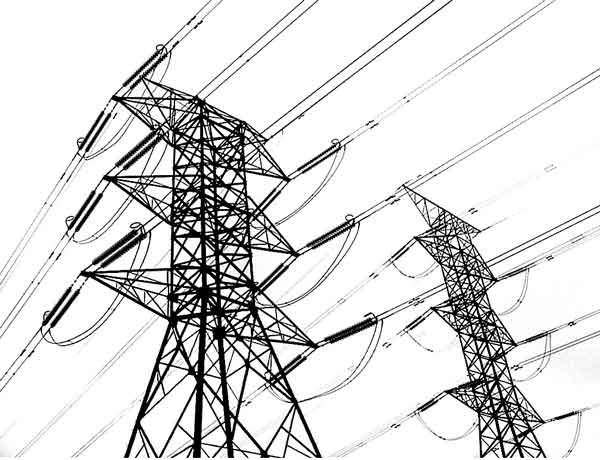Wind Power Not Just a Lot of Hot Air
COLLINSTON, Utah -- - Wind is a fact of life in this rural Box Elder County community, a nuisance no one can pull, poison or pray out of existence.
But Lorin and Sherry Bingham and their grown children have begun to look at wind another way.
Like dozens of other Utahns working with the Utah Energy Office, the family is trying to find out whether wind can be turned into a crop, an electricity source harvested with windmill turbines while the soil below grows alfalfa, safflower and winter wheat.
"It would be an absolute hoot if this thing turned out," said Cindy Tugaw as she, her parents, brother, husband and their farmhand from Peru erected a 66-foot-tall anemometer on a bluff at their 500- acre farm near the Bear River northeast of Tremonton in December.
The anemometer, essentially a wind gauge atop a pole, is on loan from the Energy Office, one of 17 placed around the state. Each month for a year, the Binghams will send in an electronic data plug from the gauge that records wind speeds.
So will the owners of Willowwood Turf in central Utah's Richfield, which erected one of the state's anemometers in November. Co-owner Kirk Harris says the farm will supply its own electricity and sell the excess if windmills turn out to make economic sense.
The 350-acre turf farm has 2 acres at the corners of each 40-acre parcel where its pivot irrigation system cannot reach. "Rather than let them be weed patches, we'd put a windmill there," Harris said. "We decided to check it out and see if there's enough wind to consider it."
Christine Watson, Utah's wind-energy officer, says the anemometers, loaned to other Utahns last year, are helping the state determine its most promising windmill sites.
Some Utahns with anemometers are in remote spots far from the electrical grid, while others hope to produce their own power and possibly sell a little back to utilities. Even more are landowners and farmers who would like to entice wind developers to lease their ground for turbine farms.
"It's like bait," Watson said.
Interest in wind generation has been surprisingly high, she said. When the state staged a wind-energy conference in October 2001, her boss predicted 50 people would attend. Instead, 400 showed up.
That interest has attracted small and large wind developers, she said. "They like to get here first. It's almost like a gold rush."
Utah's only wind turbine at present belongs to the Utah National Guard at Camp Williams near the Point of the Mountain. The state helped fund that 225-kilowatt turbine, which supplies a good portion of the camp's electricity. The guard now has federal funds to erect a 1.5-megawatt turbine windmill, which could supply enough electricity for 450 homes.
So far, wind developers are wooing landowners near Monticello in southeastern Utah and Randolph in northeastern Utah, Watson said. Tooele County's Stockton Bar area also has potential and is especially attractive because of its proximity to the populous Salt Lake Valley. One of those who had an anemometer last year at Beryl, west of Cedar City, has had nibbles from a wind developer.
Not only does a site need good wind, it also must be near transmission lines to carry electricity. In Utah, many of the electrical lines already are near capacity, Watson said.
Some of the wind developers are utilities, such as Florida Power, and others simply would build the wind farms and then sell them or the power they generate.
Even the School Trust Lands Administration, which manages 3.4 million acres of Utah lands for schools, is looking into harvesting wind. The trust lands administration erected three anemometers on windy sites in the past year, one in northern Utah's Rich County, another in southwestern Utah's Beaver County and another south of Cedar City, Watson said.
Utilities -- nudged by the government, power shortages and a fear of dependence on foreign oil -- are increasingly turning to renewable electrical sources. Of wind, solar and biomass, wind is the cheapest to produce.
Utah Power reported last summer that it has increased its wind- power purchases from Wyoming wind farms because of the success of its Blue Sky program. Nearly 3,700 Utah residential and business customers pay a bit extra each month to have their portion supplied by the wind.
Salt Lake City buys 35,000 kilowatts of pollution-free, wind- generated electricity every month for use at the City-County Building.
More than a dozen states have laws requiring utilities to get a certain percentage of their power from renewable sources, and similar legislation will be proposed in the upcoming Utah legislative session, Watson said.
It may take such laws -- as well as cheaper, smaller turbines that produce energy at lower wind speeds -- for Utahns to get into wind generation to any great extent, Watson said.
Farrell Badger, who lives at the mouth of windy Hobble Creek Canyon in Utah County's Mapleton, agrees. Of the anemometers loaned out by the Utah Energy Office last year, Badger's was one of only two that showed wind strong enough to justify the expense of building a turbine, Watson said. His wind averaged 13 mph, but the nighttime wind speed average was 25 mph.
Badger probably will erect a small, $3,000 to $4,000 turbine. It will provide a maximum of 5 kilowatt hours a day, far less than the 40 to 60 kilowatts of power his household of nine requires. A system that would come close to making his family electrically self- sufficient would cost in the neighborhood of $35,000.
"It's all economics," he said. "I'll keep playing with it, but am I going to make money or save money? No."
The state provides a tax credit for 25 percent of the cost of a wind turbine, up to $2,000, and the Legislature last year passed a metering law that requires utilities to buy excess power from small alternative-energy generators. But Badger still figures it would take years to recoup a big investment.
"If I had a 10-year return, I'd do it in a minute. I'd even consider a 15-year return."
Andy Swapp, a shop and technology teacher at Milford High School, will consider another kind of return when he gets back the results of this year's anemometer wind recordings.
"If I make my farm into one that is self-sufficient for energy, I would be able to bring the kids out here on field trips," said Swapp, who had the help of nine eighth-graders when he and Watson installed an anemometer at his farm on the Milford Flats north of Minersville this fall.
The students used geometry's Pythagorean theorem to square the anemometer pole anchors and to figure out the length of the cables between the pole and anchors, said Swapp, who teaches students from seventh through 12th grades.
"We went through the use of levers, winches, gears. It reinforced a lot of things we're supposed to learn anyway," Swapp said. The students already had built model windmills.
"It has been a fantastic experience," said Swapp, a Kanab native who moved to the area four years ago after retiring from the Army. "Everyone says the wind blows and blows and blows here. I would just love to produce my own power. It's not that I'm a survivalist, but the idea is just exciting to me."
Related News

Integrating AI Data Centers into Canada's Electricity Grids
CALGARY - Artificial intelligence (AI) is revolutionizing various sectors, driving demand for data centers that support AI applications. In Canada, this surge in data center development presents both economic opportunities and challenges for the electricity grid. Integrating AI-focused data centers into Canada's electricity infrastructure requires strategic planning to balance economic growth with sustainable energy practices.
Economic and Technological Incentives
Canada has been at the forefront of AI research for over three decades, establishing itself as a global leader in the field. The federal government has invested significantly in AI initiatives, with over $2 billion allocated in 2024 to maintain Canada's…




